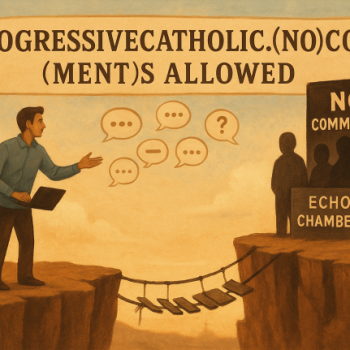What the bleep is this all about?
Define quantum physics. Go ahead. Take your time. No? Me neither.
How about spirituality?
In 25 words or less.
While you’re thinking about that, let me tell you about the most bizarrely intriguing movie I’ve seen in a long while: “What the #$*! Do We Know?”
Seriously, that’s the name of the film.
Part documentary, part melodrama, part animated feature a la “Osmosis Jones,” it’s the weirdest thing I’ve ever seen.
And I couldn’t turn it off. In fact, as soon as I finished watching it the first time, I immediately started up the DVD screener again to give it a second go.
“What the Bleep Do We Know?” as it is also known, is a film about quantum physics, spirituality — and the meaning of life. With dancing, animated red-blood cells and special effects that send you careering down computer-generated rabbit holes until you’re staring face-to-face at a throbbing hypothalamus or an unruly quark. At least I think it was a quark.
In addition to the hyperactive hypothalamus and the cellular choreography, the film stars Marlee Matlin as Amanda — a bitter, somewhat lost, divorced photographer grappling with her identity and the meaning of life.
“What the Bleep?” also features 14 talking heads — physicists (nuclear and quantum), neurologists, physicians, an anesthesiologist, a molecular biologist, a former Roman Catholic priest and one 35,000-year-old warrior from the lost continent of Atlantis.
That last one would be Ramtha, the great mystical sage whom an American woman, JZ Knight, claims to channel. Knight’s the one whose image appears on film, but supposedly it’s Ramtha doing the talking.
Compelling commentary
Anyway, interviews with Ramtha and the 13 scholar-commentators are interwoven throughout the film as Amanda tries to figure out what’s going on with a world that has been turned topsy-turvy after she catches her husband having an affair. The Amanda plot is a bit thin, but the commentary from the council of 14 — my term, not the filmmakers’ — is really compelling.
It’s full of head-scratchers, and the kind of talk I’m not used to hearing from scientists and other academics.
The ambitious film attempts to answer existential conundrums such as: What is God? What are emotions? What is the soul? What is reality? What is sin? Addiction? Love?
And the ever-popular why are we here?
William Arntz, one of the film’s three — THREE! — directors, was telling me the other day that he wanted to make a film that took scientific developments and examined them from a spiritual point of view “to resolve the split that’s been in culture for many centuries between spirit and science.”
No simple task.
If the concept for “What the Bleep?” was daunting, getting the film distributed was even more of a challenge, Arntz said.
“Theater owners and distributors and bookers said there is absolutely no market for this film,” he said. Despite the lack of enthusiasm, “What the Bleep” debuted in February and has been slowly gathering steam.
Even if you hated his film, you’ve got to hand it to Mel Gibson and his Jesus flick. Proving Hollywood wrong in such a massive way — grosses for “The Passion of the Christ” total more than $600 million — has kicked open the door for spiritually themed films that might never had a chance a year ago.
Finding an audience
Even films that are at the opposite end of the religious spectrum from “The Passion.” Like “What the Bleep?”
Against the odds, this quirky little film — all right, quarky little film — is finding an audience, mostly by word-of-mouth.
More than 60,000 people have seen it in Portland, Ore.; it’s been running for 18 weeks in Tempe, Ariz., and when it opened in Boulder, Colo., recently, it had the second-highest weekend ticket sales of the year, second only to “The Lord of the Rings: Return of the King,” Arntz said. “What the Bleep?” still hasn’t turned a profit, but the filmmakers are hopeful. By the end of the year, it is expected to be playing on 150 screens across the nation.
His film’s appeal is hard to define, much like its target audience.
“Finally there’s a film for the religious left,” said Arntz, who is a student of Ramtha and previously studied with a Buddhist teacher for several years. “This film is getting everybody out of their metaphysical closets. All these little groups and enclaves of people, and people who have these disciplines and therapies and workshops they’ve been doing for years, are all really scattered.
“When we get them out to the theater, I say, ‘Look around! Everyone here is your brothers and sisters.'”
The message of “What the Bleep?” is difficult to encapsulate in a few words, kind of like spirituality, or quantum physics. After the scientists and scholars from institutions as varied as Stanford, Columbia and Maharishi universities have floated high-minded metaphysical ideas and abstract theories of quantum physics, and after Amanda has made peace with her new life, Ramtha has one last voiceover:
“Welcome to the kingdom of heaven without judgment, without hate, without testing, without anything,” the alleged 35,000-year-old says. “That we simply are has allowed this reality we call real, from the power of intangibility, to pull out of inertness, action . . . and mold it into a form that we call matter.”
Mmm-kay. I’m not sure what that means.
Maybe it’s because I don’t understand quantum physics. Or perhaps I’m just not left enough. (There’s a first time for everything.)
“How far down the rabbit hole are you willing to go?” another character in the film asks as it draws to a close.
Fred Alan Wolf, a physicist from UCLA with funny glasses, a loud Cosby sweater and fly-away tufts of white hair, gets the last word:
“Ponder that for a while!”
Will do.
Copyright © The Sun-Times Company
All rights reserved. This material may not be published, broadcast, rewritten, or redistributed.















